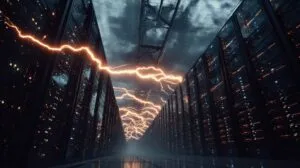Fire safety can feel like an enormous responsibility, especially when facing an emergency that threatens loved ones, colleagues, or cherished property. Fortunately, there are practical steps available that help turn anxiety into purposeful action.
One widely taught protocol involves a simple acronym: PASS. Each letter stands for a specific action, guiding anyone holding an extinguisher through a precise sequence.
Those four steps—Pull, Aim, Squeeze, and Sweep—create a manageable framework even in high-pressure moments.
Below I’ll explain in detail the PASS method, how it relates to fire extinguisher science, and give you some helpful pointers for building confidence. Let’s get into it.
Table of Contents
ToggleThe Four Steps of the PASS Method
1. Pull the Pin

No firefighting effort begins without releasing the extinguisher’s pin. That small piece, typically metal or plastic, prevents accidental discharge.
Removing it readies the device for action. Without removing the pin, no extinguishing agent can flow from the cylinder.
Why It Matters
- The pin ensures safety during storage and handling.
- Removing the pin first prevents precious time from slipping away during an actual emergency.
Tips for Success
- Grasp the pin firmly and pull straight outward.
- Some models include seals or ties. Break them with a confident tug.
2. Aim at the Base of the Fire

Merely pointing the nozzle at dancing flames has little effect. Aim lower, directing the stream toward the fire’s base, where combustible materials meet intense heat and oxygen.
Reducing that crucial combination helps cut off the fire’s lifeline.
Why It Matters
- Flames are the result, not the cause. Targeting the source attacks the root problem.
- Eliminating the fire’s fuel supply halts progress before it grows larger.
How to Aim
- Stand roughly six to eight feet away from the flames.
- Position the nozzle so the path to the fire’s base is clear.
- Keep yourself a safe distance from heat and sparks.
3. Squeeze the Handle

An extinguisher’s handle acts like a trigger. Squeezing it releases the internal pressure and propels the extinguishing agent out through the nozzle. A smooth, continuous squeeze ensures a steady, effective flow.
Why It Matters
- Consistent pressure directs a proper amount of agent toward the target.
- Weak or intermittent discharge might allow embers to linger.
What to Expect
- The handle may require moderate pressure before material flows.
- A slight recoil or short delay in releasing the agent can occur.
4. Sweep from Side to Side

Once the stream emerges and strikes the fire’s base, moving the nozzle in a gentle side-to-side motion provides even coverage. A thorough sweep helps ensure no hot spots remain, reducing the chance of reignition.
Why It Matters
- Fires can rekindle if certain parts remain hot.
- Sweeping ensures every inch of the affected area is coated effectively.
Techniques for Sweeping
- Move slowly but deliberately.
- Keep spraying until the flames vanish completely.
- Monitor the area, ready to spray again if tiny flames appear.
Different Types of Fire Extinguishers
Fire extinguishers come in many varieties, and each type handles particular fuel sources. A device suitable for a grease fire may not be equally useful against an electrical fire. Labels and class ratings guide users to pick the correct extinguisher.
Fire Classes and Matching Extinguishers
- Class A: Fires involving ordinary combustibles—wood, paper, cloth. Ideal Extinguisher: Water, foam, or multipurpose labeled “Class A.”
- Class B: Involves flammable liquids—gasoline, oil, grease. Ideal Extinguisher: Foam, carbon dioxide, or dry chemical types.
- Class C: Electrical fires with energized equipment. Ideal Extinguisher: Non-conductive varieties like carbon dioxide or dry chemical.
- Class D: Combustible metals—magnesium, titanium. Ideal Extinguisher: Specialized dry powder.
- Class K: Fires in commercial kitchens—cooking oils and fats. Ideal Extinguisher: Wet chemical designed for grease fires.
The Science Behind Fire Extinguishers

Fire feeds on three core elements: fuel, oxygen, and heat. Each extinguisher aims to remove at least one element from that trifecta. Some use foam to smother flames by removing oxygen.
Others spray water to cool materials below their ignition temperature. Still others rely on chemical agents that interrupt the fire’s chemical reactions. A few examples:
- Water-Based: Lowers the fire’s temperature until combustion ceases.
- Foam: Forms a barrier, cutting off oxygen supply.
- Dry Chemical: Disrupts chemical reactions within the flames.
- Carbon Dioxide (CO₂): Displaces oxygen and cools the area with a cold blast of gas.
Common Mistakes to Avoid
Even with a solid grasp of the PASS method, anxiety and confusion may arise during emergencies. Recognizing common errors can minimize slips when it matters most.
- Skipping Steps: In tense moments, one might forget to pull the pin or aim properly. Practice dry runs before danger strikes.
- Improper Distance: Standing too close risks personal harm, and being too far reduces effectiveness. Keep a comfortable, safe gap.
- Wrong Extinguisher: Using a water-based extinguisher on an electrical fire creates big problems. Always confirm the correct class before reaching for one.
Keeping Fire Extinguishers Ready
A fully charged and well-maintained extinguisher stands ready as a silent guardian. Poor maintenance, however, turns it into a useless prop. Consider some basic upkeep tips:
- Check the Pressure Gauge: The needle should stay in the green zone.
- Look for Damage: Inspect for dents, rust, or leaks. Compromised integrity equals unreliable performance.
- Replace Old Units: Most extinguishers last between 5 to 15 years, depending on type. Consult guidelines and replace when necessary.
- Ongoing Training: Regular refresher sessions with family members, employees, or housemates instill lasting confidence.
Fire Safety Training
@safetysparkspodcast Fire Safety Training!! Everything You Need To Know! 🔥👨🚒🧯 #shorts #fire #firesafety #modify #home #housefire ♬ original sound – safetysparkspodcast
The PASS method provides a crucial skill set, though it forms just one piece in the fire safety puzzle. Broader preparedness strategies solidify the chance of avoiding harm.
Evacuation Planning
Always prioritize personal safety. If a fire grows beyond a manageable size or emits toxic smoke, clear the area.
Having a plan for quick escapes, designated meeting points, and phone contacts for emergency services saves precious time.
Fire Drills
Conducting drills reinforces muscle memory. Rehearsing the PASS steps or practicing an evacuation ensures that, when alarms shriek, everyone moves with calm determination rather than confusion.
Risk Assessments
Regularly scanning an environment for hazards helps prevent fires from starting in the first place. For homes, consider items like frayed electrical cords or cluttered kitchens.
For businesses, pay attention to proper storage of flammable materials and ensure exits remain unblocked.
Smoke Alarms and Sprinklers
Fire extinguishers are potent tools but work best when combined with early warning systems. Smoke alarms provide a timely alert, and sprinklers suppress flames automatically.
Layering various safety measures creates a more robust defensive shield.
Recognizing When Not to Use an Extinguisher

Sometimes, the flames surpass the scope of a handheld device. Attempting to fight a large, rapidly expanding fire endangers everyone involved. Consider the following criteria before engaging:
- If Flames Spread Quickly: Rapid growth usually indicates a situation best left to professionals.
- If Smoke Is Overwhelming: Thick, toxic fumes harm breathing and can disorient. Protect life first by retreating.
- If Escape Routes Look Threatened: Maintain a clear path to an exit. Never corner yourself.
- If Uncertainty Is Present: Lack of confidence in operating the extinguisher or uncertainty about the fire type calls for immediate evacuation and contacting emergency personnel.
Closing Thoughts
Fire safety belongs in everyday conversation. The PASS method—simple, memorable, and effective—exists to help you stay level-headed if flames appear.
Investing time in gentle practice, drilling family members, and verifying that extinguishers remain in good working condition brings peace of mind.
No one wants to face a blaze, but being ready can make all the difference. By mastering four steps and remembering basic safety guidelines, that preparedness could prevent what might otherwise become a life-altering event.
Related Posts:
- 10 Best Tips to Break Free From Social Anxiety and…
- 26 Most Dangerous Cities in US - Updated Statistics for 2025
- What Does SOR Mean? - 15 Common Interpretations
- Commercial Fire Alarm System - What You Need to Know
- Safest Countries in the World in 2025 - GPI…
- Fire System Installation - Protect Lives and Property








